In many ways, the helo is synonymous with the U.S. involvement in the Vietnam War.
From troop transport tomedical evacuationto air assault, these airborne utility helicopters proved invaluable to America and her allies.
In this article, former Army aviator Dr. Will Dabbs tells the story of these ubiquitous helicopters.
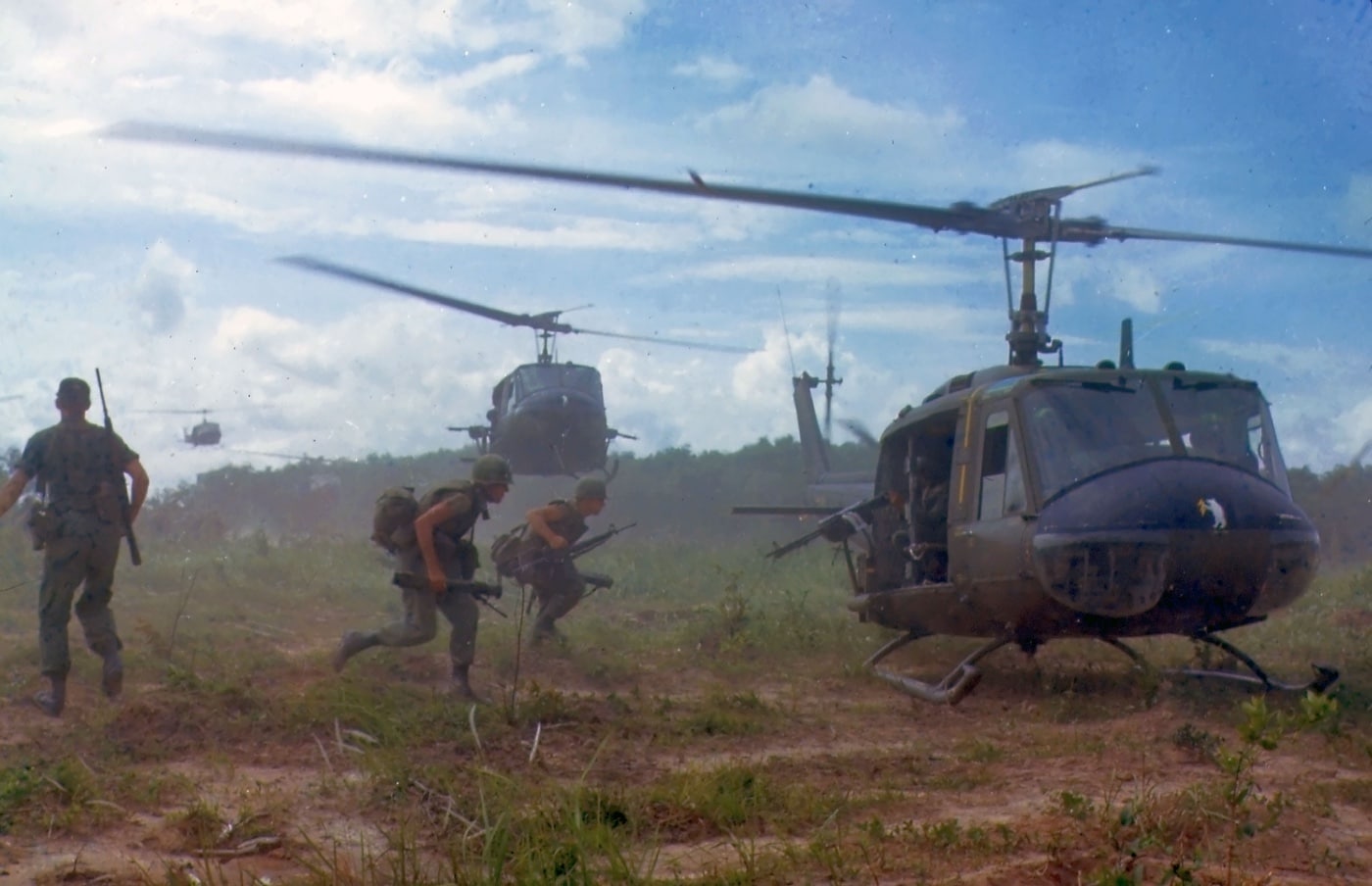
During Operation Wahiawa in 1966, members of the U.S. Army 25th Infantry Division load onto UH-1D helicopters to conduct a search and destroy mission northeast of Cu Chi, Vietnam. Image: NARA
Ihave a friend named Tom who flew Hueys in Vietnam.
Like most of the older aviators with whom I flew, this guy mastered his craft in Southeast Asia.
In addition to being an invaluable source of combat experience, these veterans also had some epic stories.
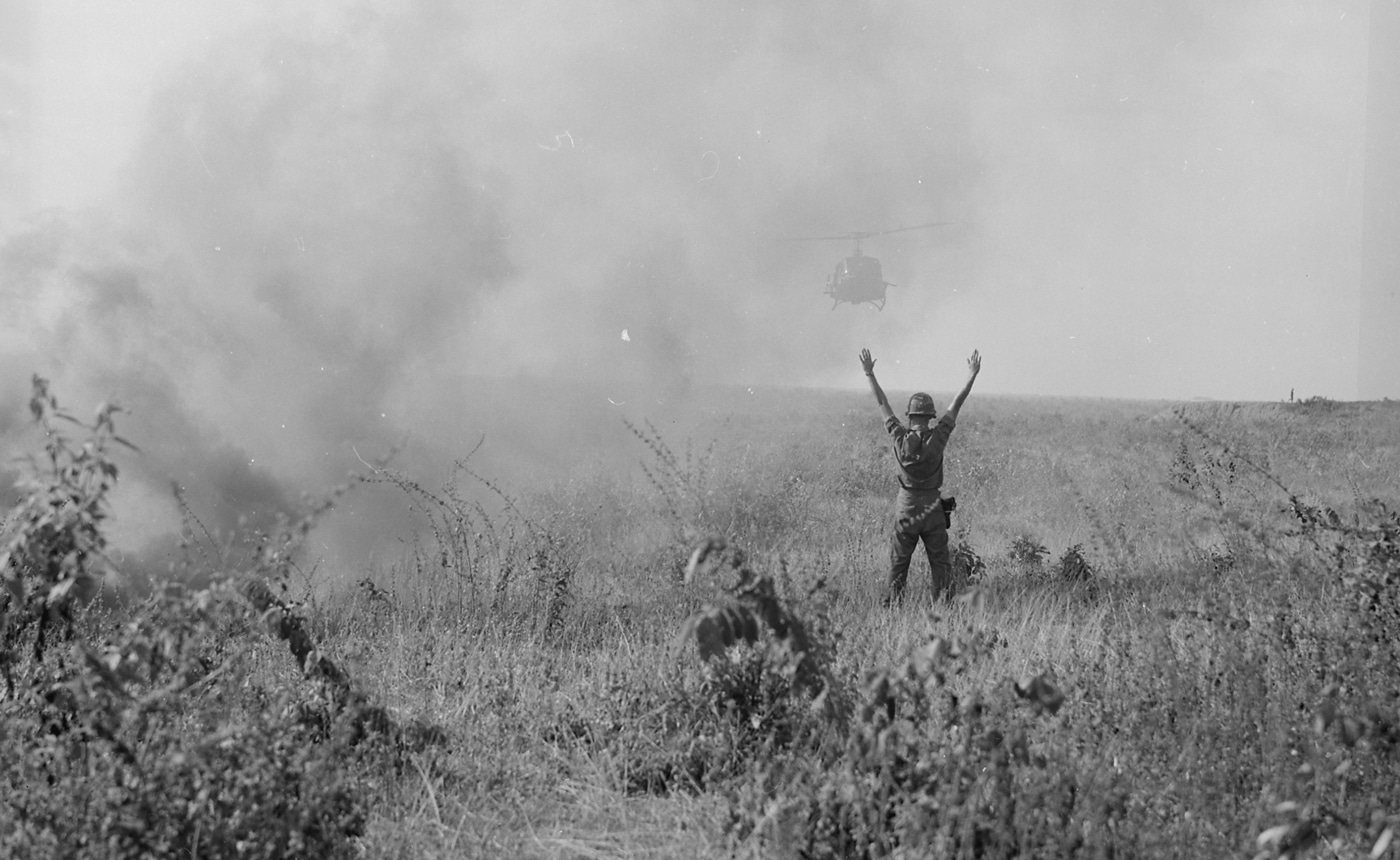
In October 1966, this U.S. Army soldier directs an approaching UH-1 helicopter to pick up injured soldier after a paradrop in South Vietnam. Image: NARA
On this particular day, Tom was taking a shower.
Tom tore out of the shower tent and did just that.
Somebody was kind enough to gift him some clothes for the subsequent trip back home.

A UH-1 of the 1st Marine Division delivers supplies to Marines during Operation Oklahoma Hills in April 1969. Image: NARA
My buddy proved once and for all that it was indeed possible to fly an Army helicopter naked.
I dont know what first drew me to military service, but it certainly wasnt the five-star accommodations.
However, everybody everywhere refers to the UH-1 as the Huey.
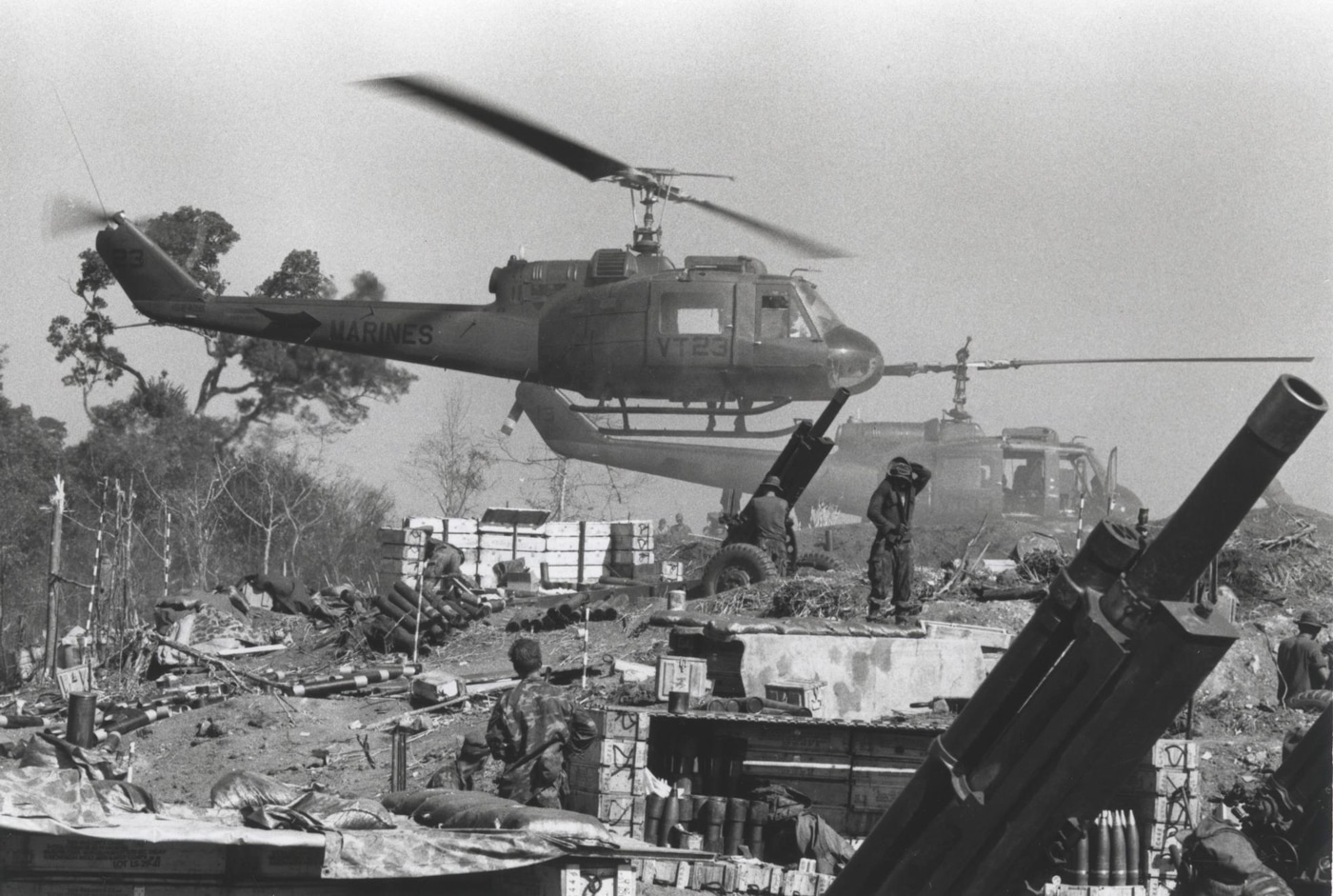
Marine UH-1E helicopters touched down at Fire Support Base Cunningham in 1969. Artillerymen of the 12th Marines were supporting the 9th Marines. Image: Lance Cpl. M. C. Patterson/U.S.M.C.
The original service designation was actually HU-1.
Thats where the Huey came from.
More-so than any other single weapon system, the Huey came to exemplify the war in Vietnam.
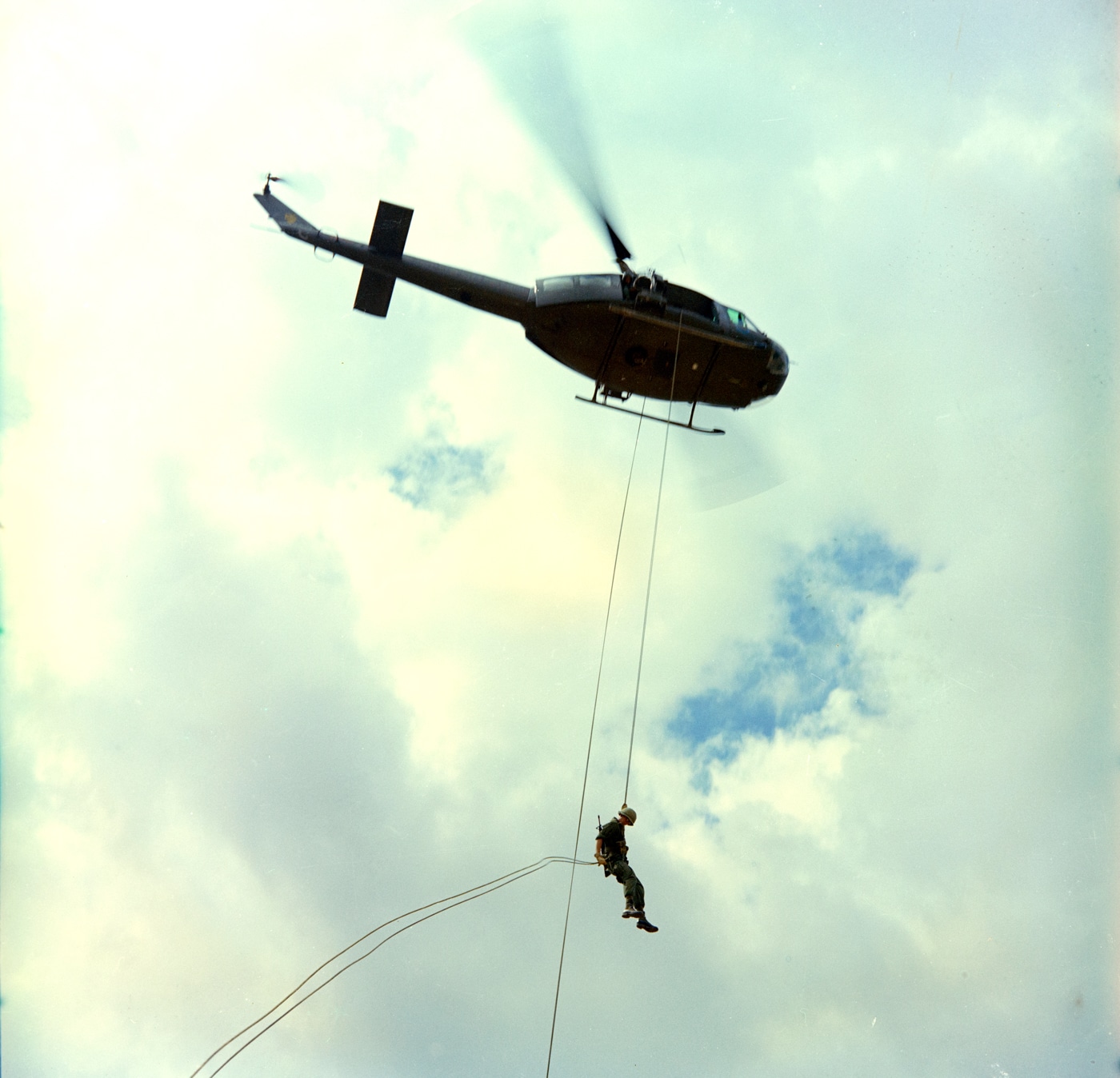
The 5th Bn., 7th Cav., 1st (Airmobile) Cavalry Division at An Khe, South Vietnam conducts helicopter insertion training from a UH-1D in January 1967. Image: NARA
Everybody who ever wiggled the sticks in a UH-1 loved the thing.
The prototype XH-40 that went on to become the iconic Huey first flew on 20 October 1956.
The UH-1 represented the transition from piston-driven rotorcraft to those powered by turboshaft engines.
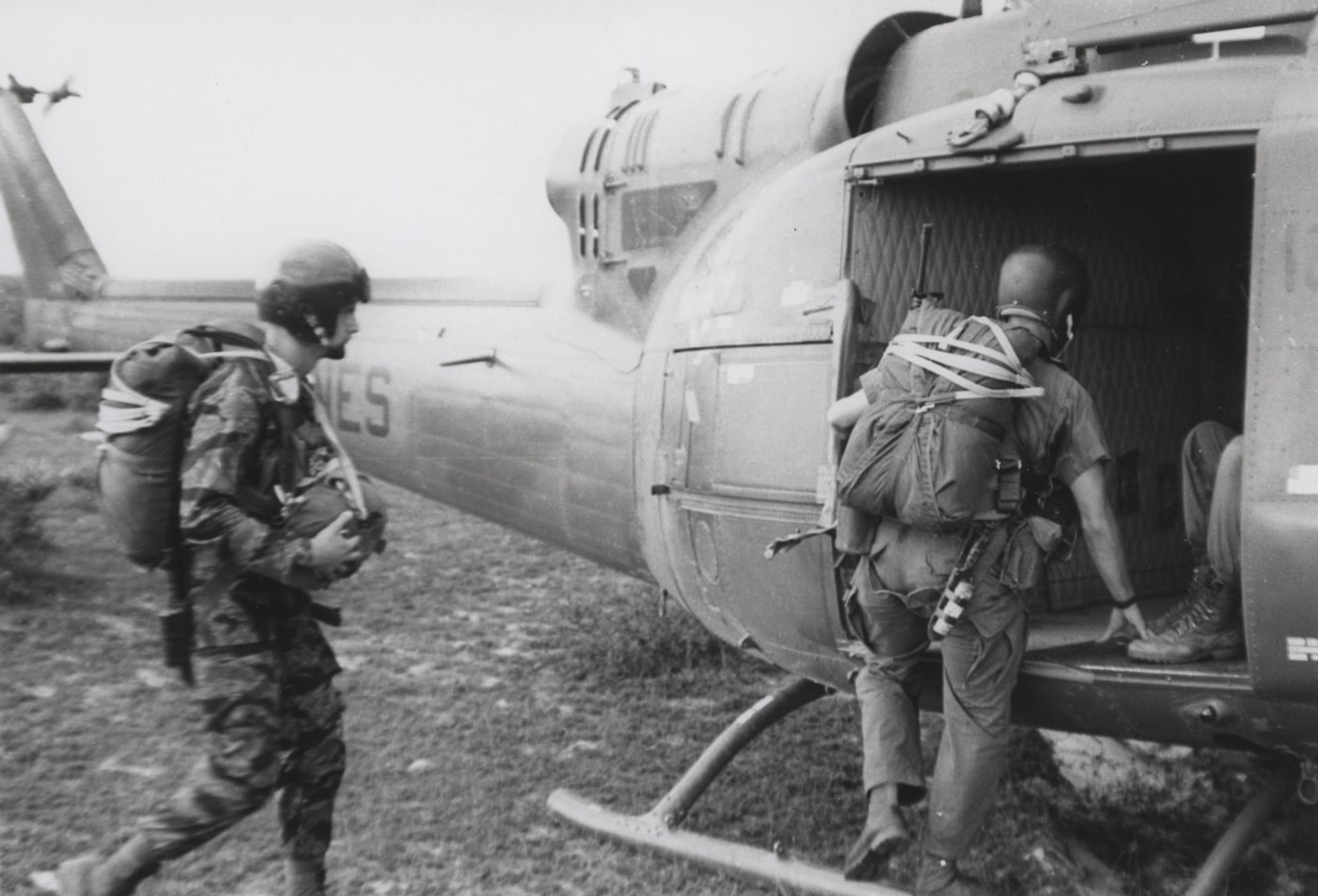
U.S. Marines of 3rd Force Reconnaissance Company (3rd Force Recon) climb aboard a UH-1E for a paradrop during the Vietnam War. Image: Sgt. J.G. McCullough/U.S.M.C.
The Lycoming YT53-L-1 powerplant of the XH-40 put out some 700 shaft horsepower.
A more powerful engine, the Lycoming T53-L-13 that powered Toms bird, did exactly twice that.
The A, B, and C-models sported a fairly short, stubby fuselage.
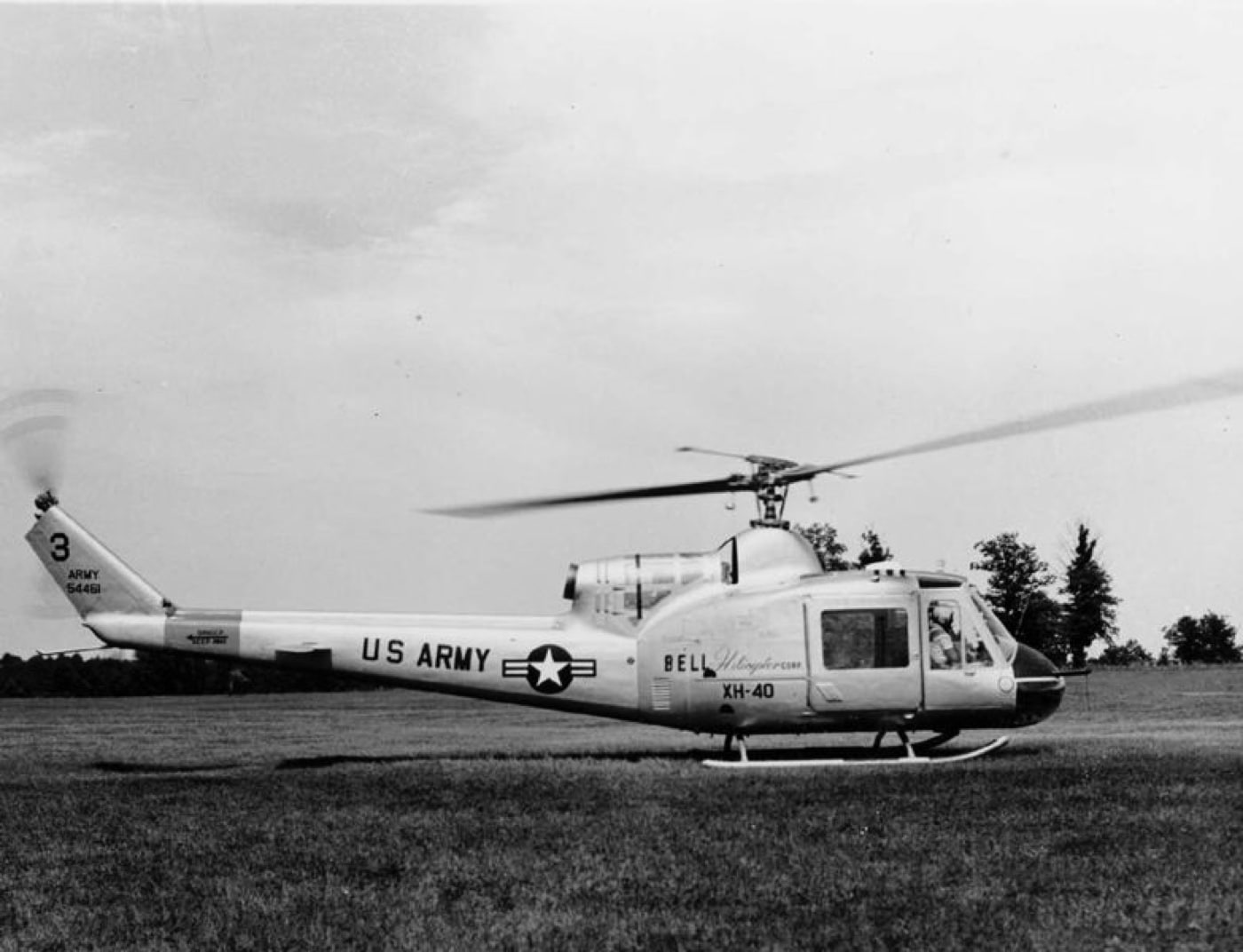
The origins of the Huey family started with the prototype XH-40 helicopter. It first flew in 1956 and introduced the world to what may be the most successful helicopter in history. Image: U.S. Army
The UH-1D model was a derivative of the Bell Model 205 and featured a longer fuselage design.
The UH-1H combined the lengthened D-model architecture with the later 1,400-horsepower engine.
It was the most common service variant.
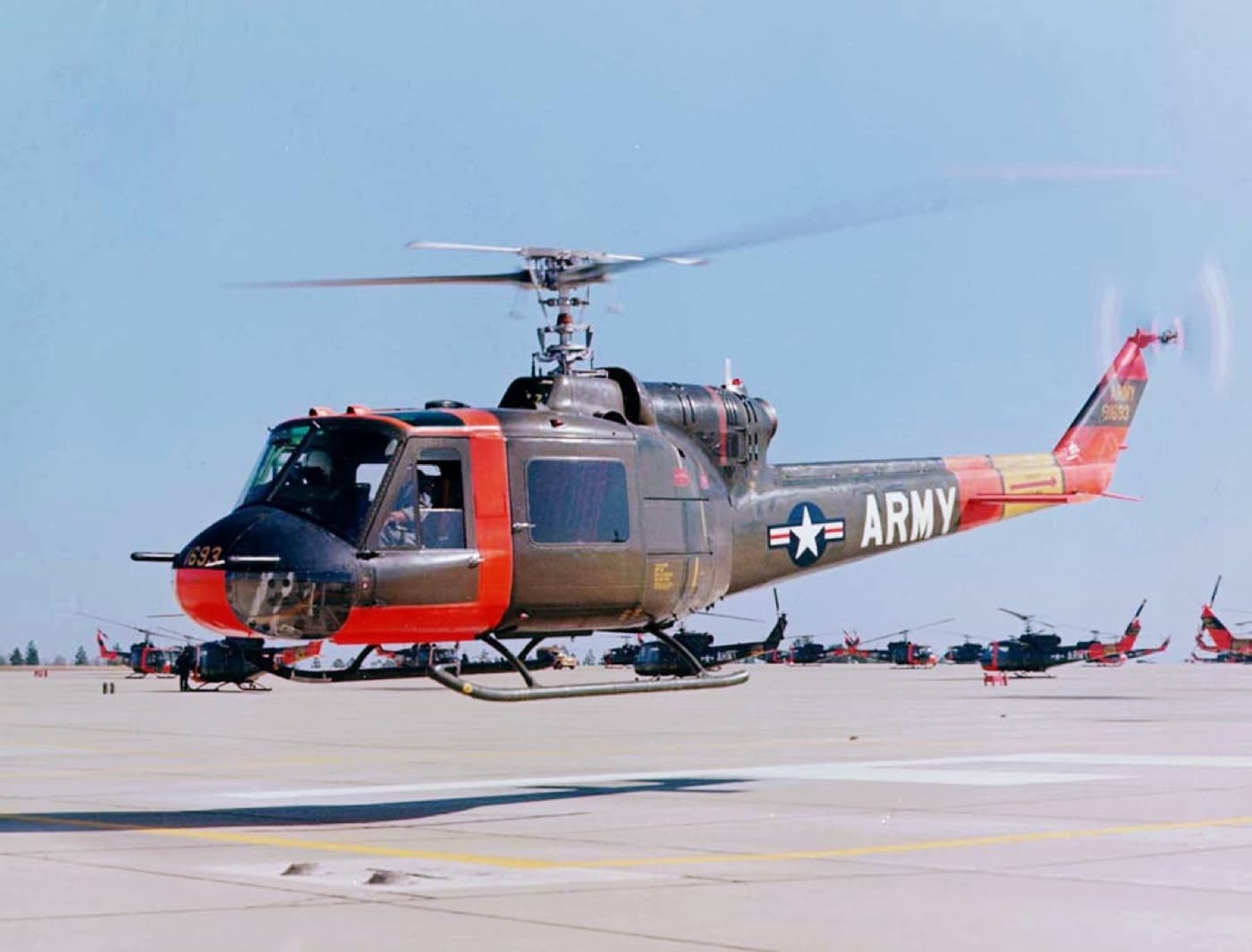
The Bell UH-1A was the first model delivered to the United States military. Initially, the military designated the helicopter as the HU-1 which inspired its nickname. Image: U.S. Army
More than 16,000 copies of all sorts were ultimately manufactured.
UH-1N and UH-1Y twin-engined Hueys remain in service with the USAF and USMC today.
The UH-1H had a total dimensional footprint of 58 feet and a max gross weight of 9,500 pounds.
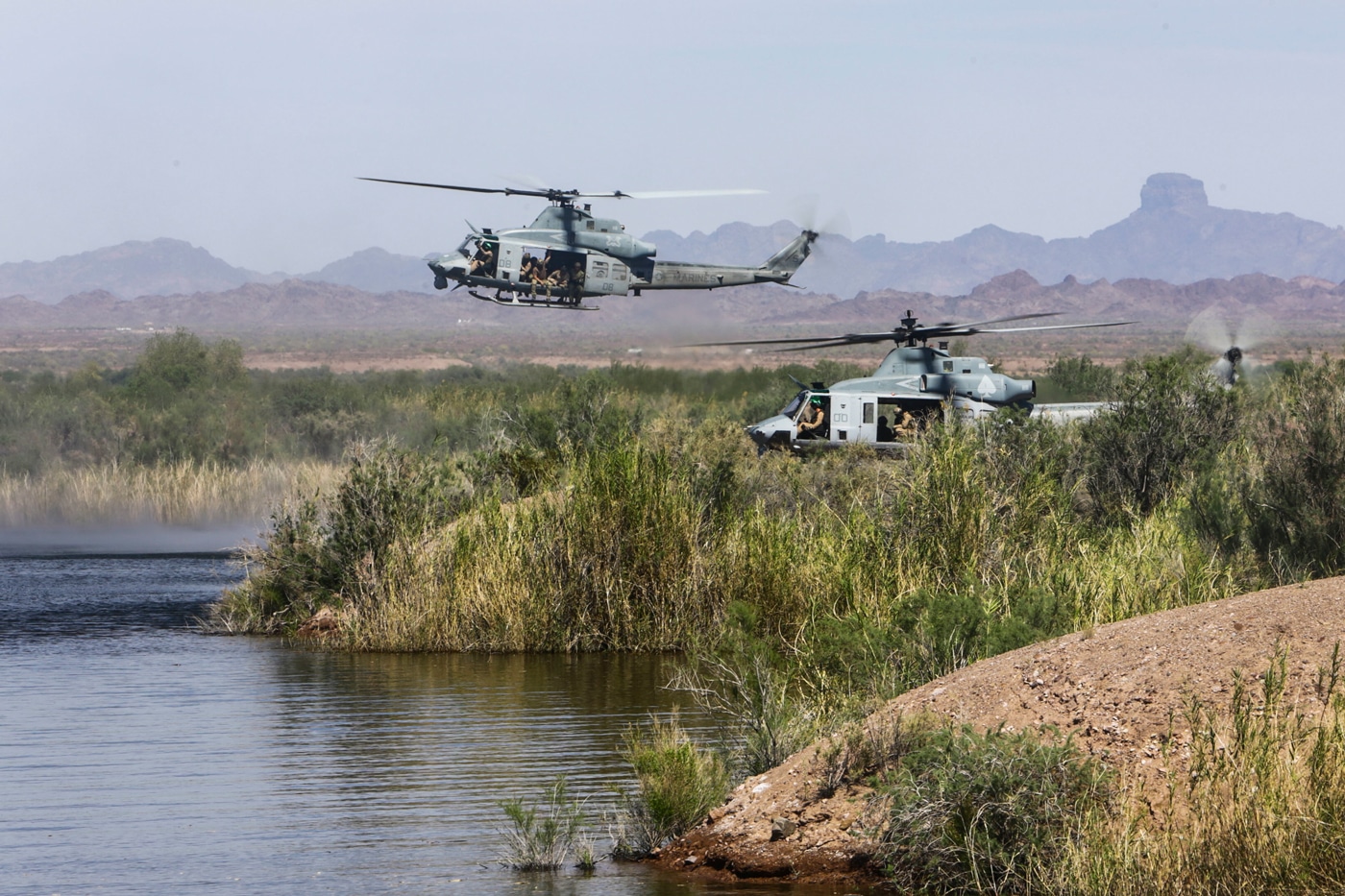
UH-1Y Venom helicopters assigned to Marine Aviation Weapons and Tactics Squadron One land during a helocast exercise at Ferguson Lake near Yuma, AZ in 2015. Image: Staff Sgt. Artur Shvartsberg/U.S.M.C.
Vne (velocity never-to-exceed) was 124 knots, or 143 miles per hour.
The Huey typically flew operationally with two pilots and either one or two crewmembers.
Cargo capacity was about 3,880 pounds.
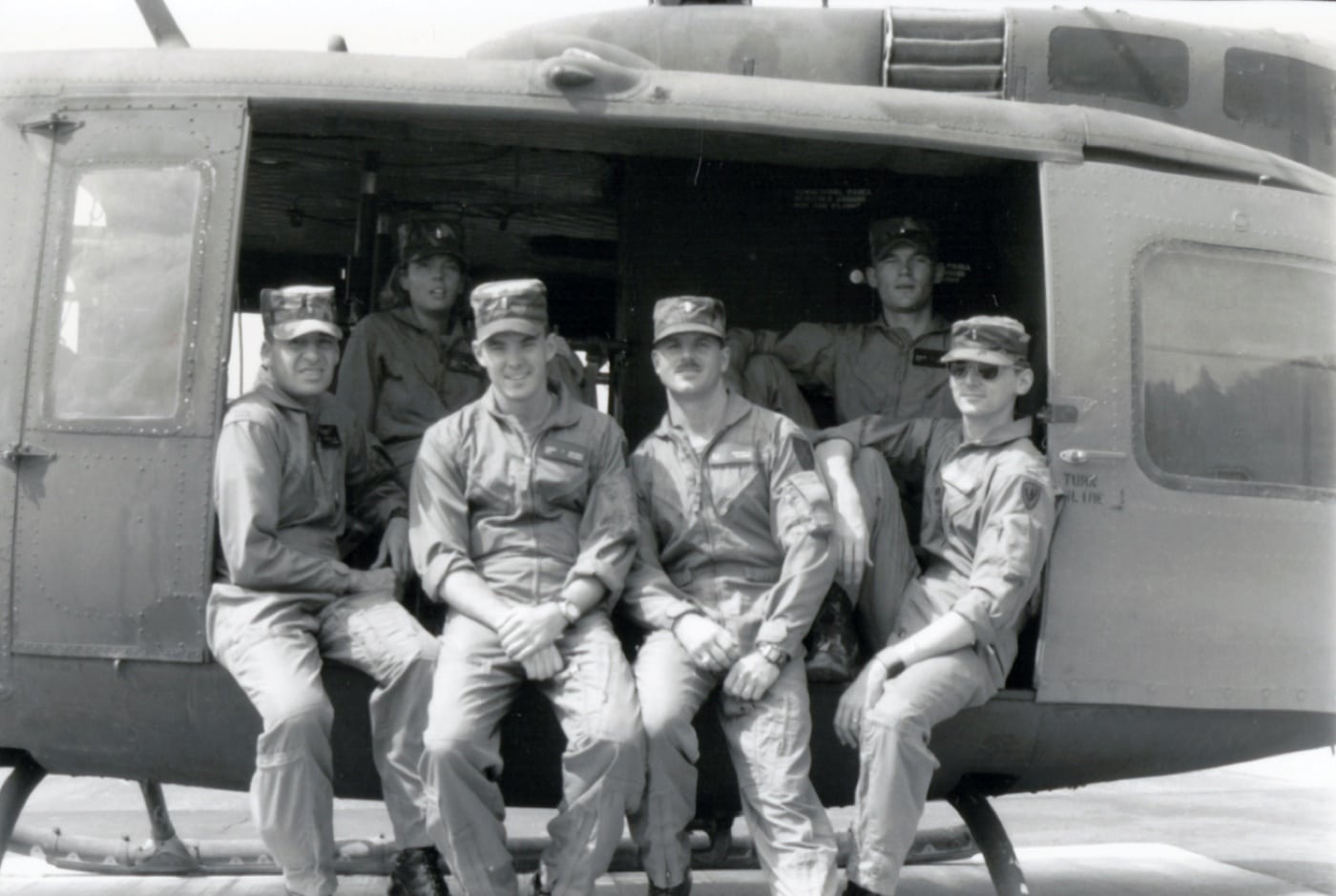
The author, pictured far right, at the U.S. Army’s rotary-wing flight school. He learned to fly helicopters in the UH-1H Iroquois.
The men operating these machine guns were known as door gunners.
Primary flight training in my day was undertaken in vintage UH-1Hs.
The first time I broke ground in a helicopter was at the controls of a Huey.
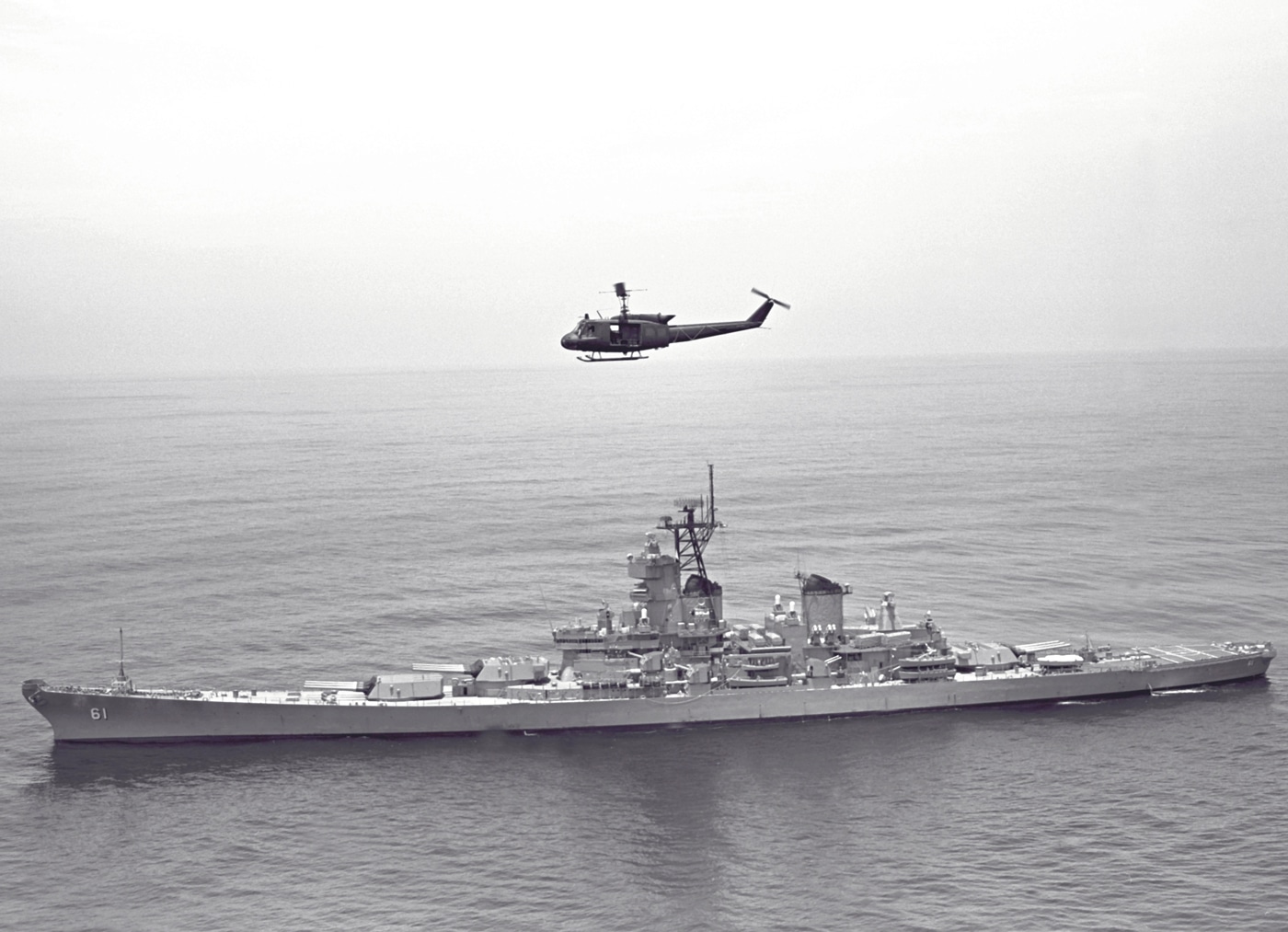
A UH-1 Iroquois helicopter flies over the battleship USSIowa(BB-61) during its shakedown cruise in 1984. TheIowahad been modernized and returned to service to counter the Soviet Union. Image: NARA
Reviewing the startup procedure gets my blood pumping even today some 33 years later.
Heres a brief video:
Theres really nothing in the world quite like that sound.
As the engine and rotors spool up, the aircraft runs through an interesting harmonic range.
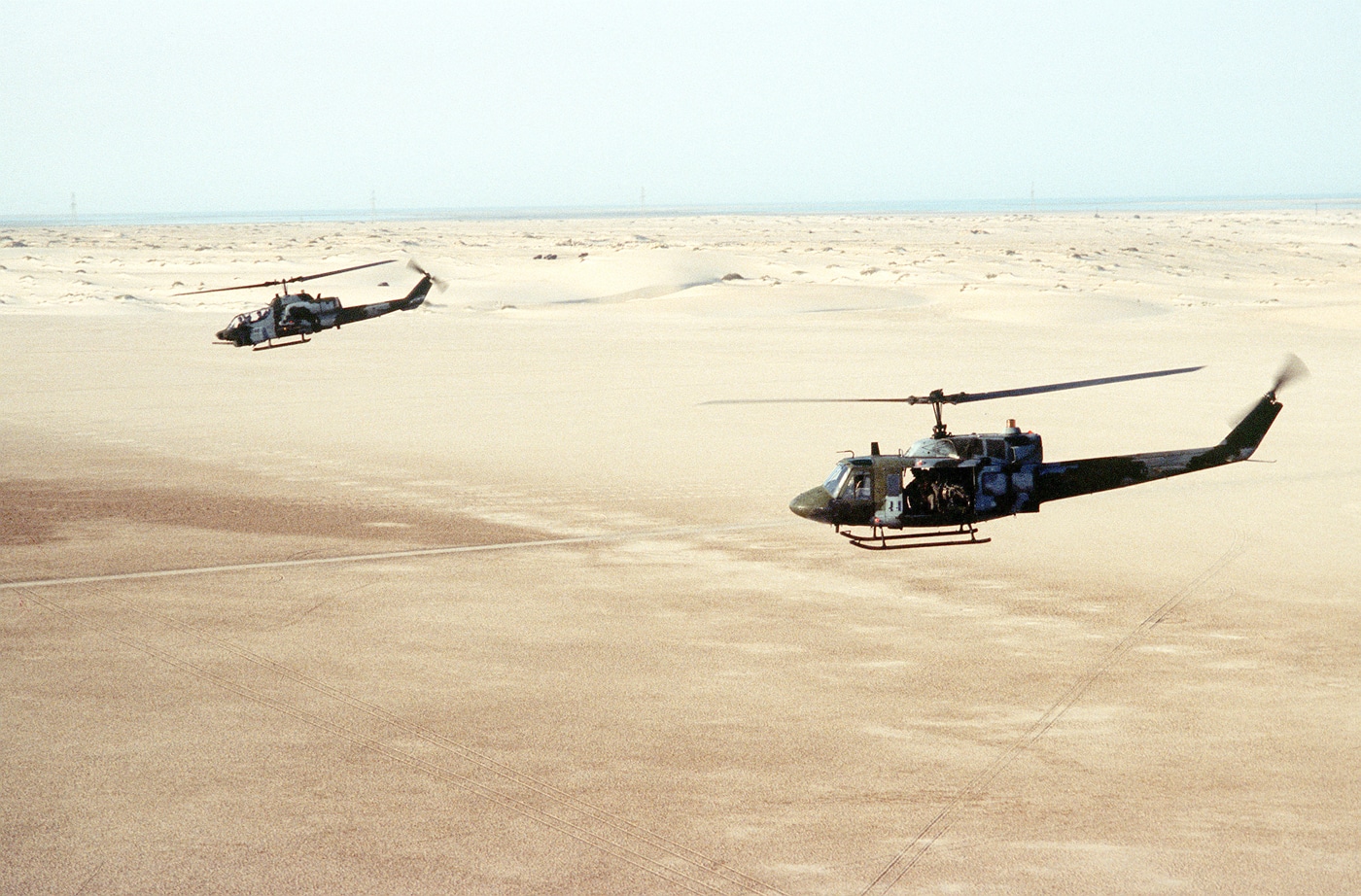
A UH-1N Iroquois helicopter, foreground, and an AH-1 Sea Cobra helicopter fly over the desert in Saudi Arabia during Operation Desert Shield in 1991. Image: NARA
Once the aircraft is up to speed it is smooth and responsive.
The Huey struck a nice balance between size and performance.
In the hands of a competent pilot, a Huey will reliably induce airsickness in the uninitiated.
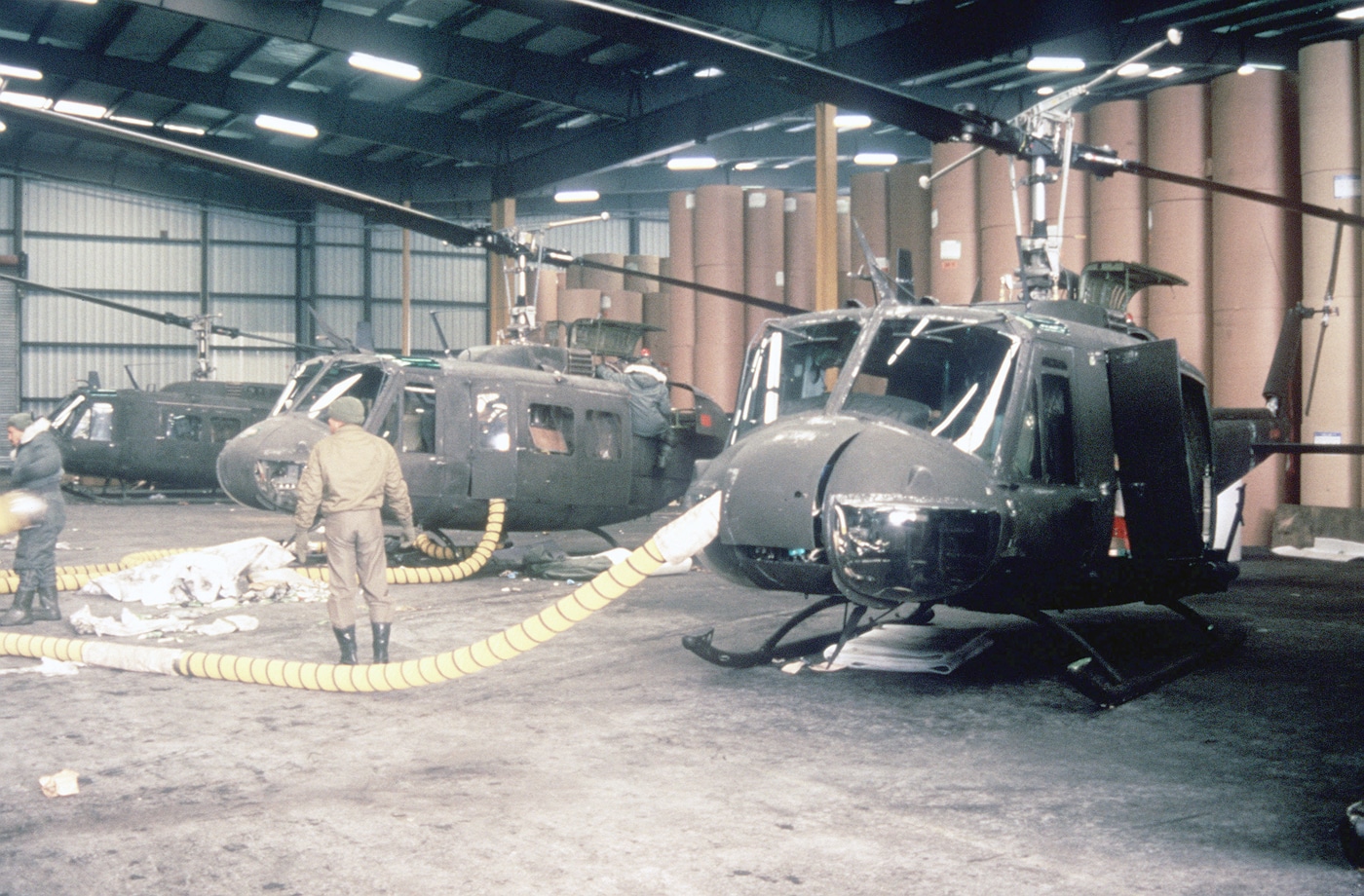
Soldiers unpack and prepare UH-1 Iroquois helicopters for flight in a port warehouse during Exercise REFORGER ’85. Image: NARA
As you break ground and air taxi, the Huey feels like it is sliding on greased glass.
Like most helicopters, control inputs, particularly at a hover, are extremely nuanced.
You nudge rather than push.
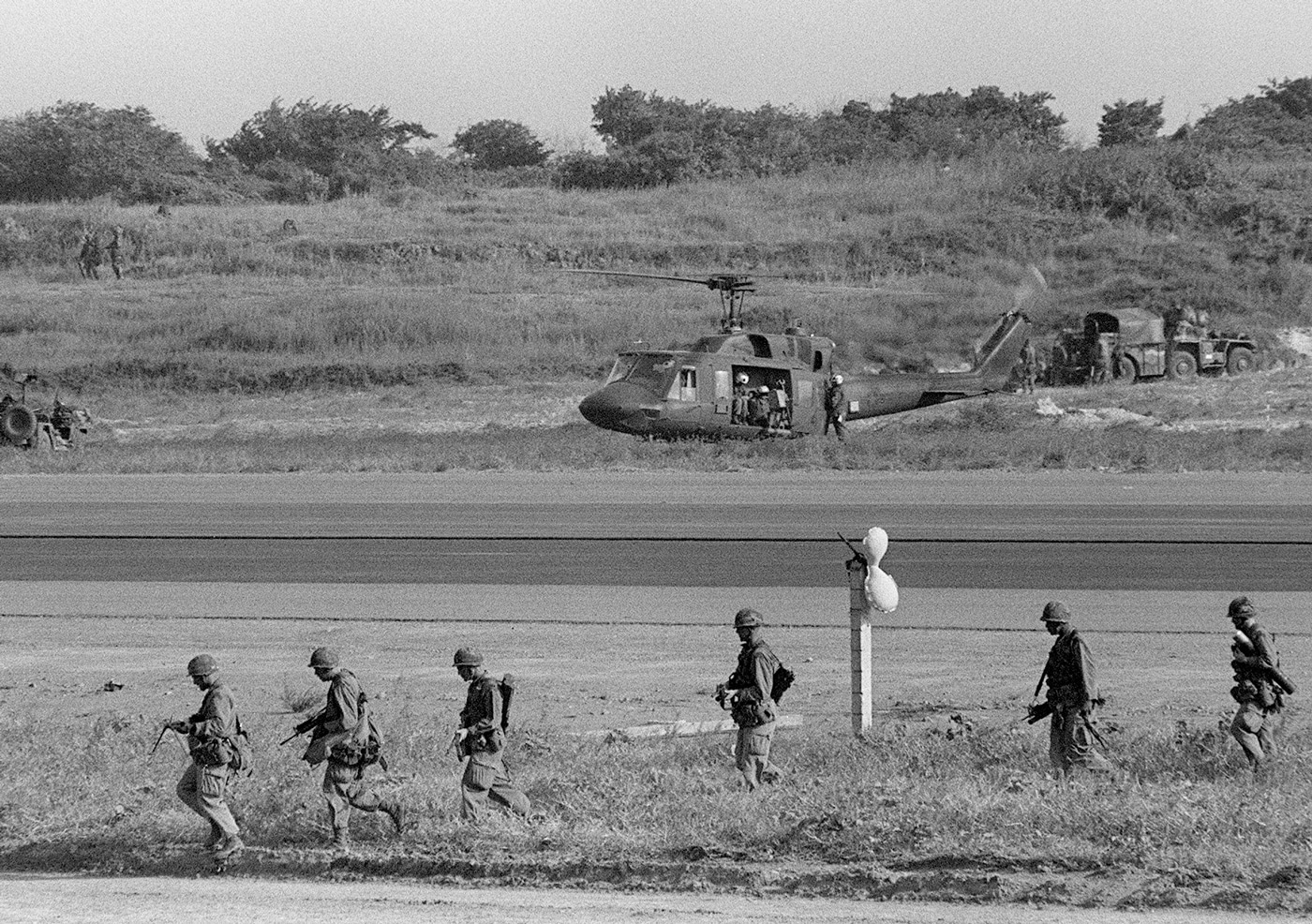
Marines engaged in Operation Urgent Fury advance along a road on Grenada. A UH-1 Iroquois helicopter prepares to take off to support their mission. Image: NARA
Over-controlling is a ubiquitous problem with fledgling helicopter drivers.
The same experience while strapped into the gunners well is almost as cool.
The worlds best roller coasters pale in comparison.
The UH-1H Huey is indeed Americas helicopter.




